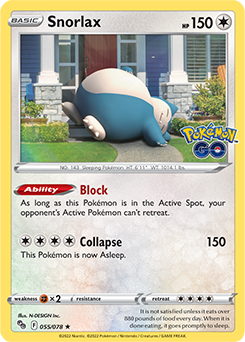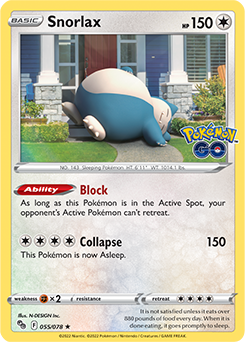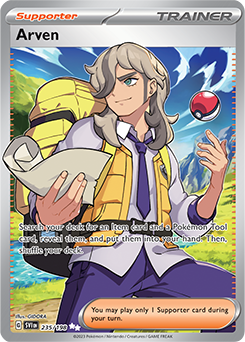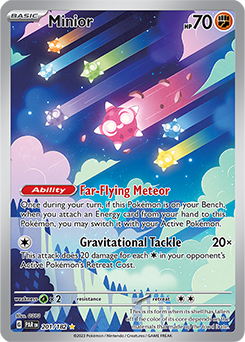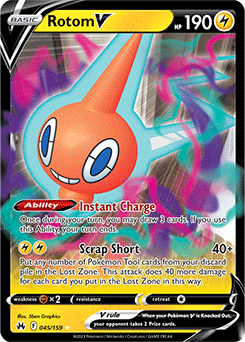Read on below to learn more about some official Pokémon TCG deck strategy tips featuring Snorlax:
Learn how to build a deck around Snorlax from the Pokémon GO expansion and its disruptive Block Ability.
By Xander Pero, Contributing Writer
If your opponent cannot draw a card at the start of their turn in the Pokémon TCG, you win the game. This is colloquially referred to as “decking your opponent out,” and while it’s not as common as taking six Prize cards or leaving your opponent without any Pokémon in play, cultivating this win condition can be a powerful strategy.
Decking your opponent out is uncommon because most decks can attack back and forth while retaining enough fuel to reach the finish line. However, once in a blue moon, a player may be forced to discard too many resources and will be unable to retreat or switch a non-attacking, trapped Active Pokémon.
But what if there were a deck that could effectively win by consistently employing this laid-back strategy thanks to some new tools from Scarlet & Violet—Paradox Rift? And what if it even had a Regional Championship win to its name? Well, let me introduce you to Snorlax Stall, which combines Snorlax’s Block Ability with the newly reprinted Counter Catcher and other disruptive Trainer cards to laze a path to glory.
When Snorlax is your Active Pokémon, the opponent cannot retreat their Active Pokémon. That may not sound all that impressive, but it can be quite powerful when considering all the non-attacking support Pokémon in common meta decks. By making use of Erika’s Invitation, Boss’s Orders, or Counter Catcher, you can bring up these Pokémon and trap them with Block. If your opponent doesn’t have a switching effect, then you can leave it trapped forever and prevent yourself from decking out with a combination of Cyllene and Team Yell’s Cheer.
Here is Łukasz Mazurkiewicz winning deck list from the Gdańsk Regional Championships:
If this doesn’t look like a typical Standard deck list, you’d be right! We play a single Water Energy, which we can use for Crabominable V’s Trigger Avalanche. Other than that, we will end every turn of the game without an attack. Let’s take a deeper look into the different components of this list to understand how they contribute to our deck out strategy.
Starting off with our Pokémon, we have a full four copies of Snorlax. Most of the time, we will end our turn with an Active Snorlax to make use of its Block Ability. Rotom V is our draw engine. Since we aren’t attacking, we can make use of Instant Charge every turn. This provides us with much-needed support because most of our Supporters are disruptive. Typically, our plan will be to amass a large hand and keep it. Pidgeot V is another way to prevent us from decking out, but it’s mainly used as a target for Forest Seal Stone if Rotom V has been Knocked Out. Because of Vanishing Wings, you can shuffle it back into the deck and enforce the Block lock.
The remaining Pokémon up our meddling capabilities. Our opponent might think they are safe with one or two cards left in their deck, but their safety is an illusion if we have Crabominable V. Mimikyu’s Safeguard Ability can be tricky for some decks to deal with, especially with the added HP from Bravery Charm. With Mimikyu, we may be able to force a weak Pokémon onto the board to be trapped later with Snorlax, or force the opponent to exhaust resources they would’ve preferred to save. Finally, Spiritomb is specifically for the Mew VMAX matchup, which could otherwise draw too many cards with Genesect V’s Fusion Strike System Ability. It also stops the opponent from making use of their own Pidgeot, which could prevent them from decking out.
Because we make use of Rotom V as our main draw engine, we can play disruptive Supporters that contribute to our success. These Supporters seek to discard the opponent’s important resources, such as switching effects and Energy cards. Some also serve to improve our own longevity by recycling important cards or picking up damaged Pokémon. Outside of these two groups, Arven is the best Supporter in our deck because it can lead to any card with Forest Seal Stone. On top of that, with Counter Catcher, Arven can act as a Boss’s Orders when the opponent switches out the Pokémon we’re trying to trap.
One very important Supporter is Erika’s Invitation. If the opponent doesn’t open the game with a trappable Pokémon, they aren’t forced to put one into play. In the past, the only way to force a Pokémon onto the field was with Echoing Horn. Now with Erika’s Invitation, any Radiant Greninja or other vulnerable target is not safe in the hand. The other crucial combo that can result in a trapped Pokémon does utilize Echoing Horn. By pairing it with Avery, we can create an open spot on the Bench, pull back a prime target with Echoing Horn, and then trap it with Counter Catcher.
The final Supporter to highlight is Penny, which when combined with Bravery Charm, can stop an opponent from taking Prize cards. Bravery Charm brings Snorlax up to a gigantic 200 HP—enough HP to avoid being Knocked Out in one attack by many Pokémon. With Penny, you can freely heal the Snorlax and play Counter Catcher, once again trapping a weak or non-attacking Pokémon. Penny can also be a great way to close out the game by removing any non-Snorlax in play. Rotom V can become a liability near the end of the game if the opponent can bring it up with Boss’s Orders. This not only deactivates Block, but also gives up a catastrophic two Prize cards. Because we need to limit the number of Prize cards the opponent can take per switching effect—assuming we have the Block lock up—the additional Prize card given can be the difference between a win and a loss.
The Pokémon you’ll try to trap depends on the deck your opponent is playing. Usually, every popular meta deck has at least one Pokémon that is purely there for support. Manaphy, Jirachi, Radiant Greninja, and Squawkabilly ex are a few examples. They likely won’t put these into play for free; instead, you’ll need to be patient with Erika’s Invitation or Echoing Horn. If you’re lucky, they’ll draw into it and be vulnerable to Erika’s Invitation or an Avery play.
One thing to remember is that even if the opponent can attack with this Pokémon, if it isn’t doing substantial damage, then it doesn’t matter. Miraidon ex decks usually play Squawkabilly ex to guarantee an explosive turn one. Even though the opponent can attack for 20 damage with Motivate, it would take a full 10 turns of attacking to Knock Out a Snorlax with a Bravery Charm. This is plenty of time to cycle Penny into another Snorlax and continue with the deck out strategy. The real problem arises if the opponent can Knock Out Snorlax in one to three attacks, which establishes a much quicker clock on being able to prevent Prize cards from being taken.
To that end, you’ll typically want to set up an initially wide board of Snorlax and Rotom V. Then, you can begin to probe at the opponent’s hand with Erika’s Invitation. Even if you don’t find a Pokémon from the first Erika’s Invitation, you’ll have plenty of time to recycle them with Pal Pad until you score a hit. Your opponent cannot be overly aggressive, otherwise they may discard a supporting Pokémon and be vulnerable to Echoing Horn.
This strategy can seem farfetched or foolproof at times, and it certainly has faults. The most glaring one is that it is heavily reliant on the opponent’s deck list. If the opponent plays enough switching effects, you may be unable to win the game regardless of if the opponent started with a trappable Pokémon. Giratina VSTAR plays many switching effects and Jet Energy, which allows it to have a highly favorable matchup into Snorlax Stall.
Another strong counter, Minior came out of the most recent Scarlet & Violet—Paradox Rift Expansion. Though this Basic Pokémon seems small, it is certainly mighty. Its Ability, Far-Flying Meteor, lets you bring Minior to the Active Spot if you attach an Energy to it. With enough Energy, you can switch out a trapped Active Pokémon and continue attacking with Minior. The other important piece is Minior’s Gravitational Tackle attack, which does 20 times the Retreat Cost of the Defending Pokémon. Snorlax has a Retreat Cost of four, which when multiplied with Weakness, means that Gravitational Tackle does 160 damage. This Knocks Out a Snorlax without a Tool attached!
Minior is not foolproof, though. A weird cat-and-mouse game can develop in deck list finalization when thinking about how much your opponents will tech for Snorlax Stall. If you think people will play Minior, then you can include Mawile and Defiance Vest. Once the opponent takes a Prize card with Minior, you can use Mawile’s Tempting Trap attack to trap it in the Active Spot! Gravitational Tackle would only do 20 damage, which is reduced to zero from Defiance Vest. If you can’t switch out Minior to a different attacker to combat Mawile, you will remain trapped forever.
Outside of hard-countering Snorlax, there are a few things you can do to shut down the strategy. The first thing you’ll want to do is target Rotom V. If you can cut off Snorlax’s draw support, they may not be able to find another Counter Catcher after you play a switching effect. Moreover, Judge and Iono are great ways to reset your opponent’s hand, especially if they had many more than four or six cards in it beforehand. Finally, small modifications to your deck list, like including a Professor Turo’s Scenario, can give an edge in this matchup while still being useful in others. Another useful card against Snorlax is Spiritomb, which can shut off their Rotom V permanently. If it’s ever brought to the Active Spot, you can use Fade Out to return it to the hand and play it down again.
It’s interesting to see how players come up with ideas to exploit certain weak points in an opponent’s deck list. This highlights an important deck-building skill and illustrates that the meta is constantly evolving! If you’re looking to try out an unconventional deck, give Snorlax Stall a try!
For more Pokémon TCG analysis, visit Pokemon.com/Strategy.
About the Writer

Xander Pero
Xander Pero is a contributing writer for Pokemon.com. He was an avid fan until discovering sanctioned tournaments in 2009. He formerly traveled often for the Top 16 circuit, but now spends his time focusing on university, where he studies industrial engineering. You can find him at various tournaments, as well as on Twitter at @xanderpero.
Source: Pokemon.com
Source: Pokemon

